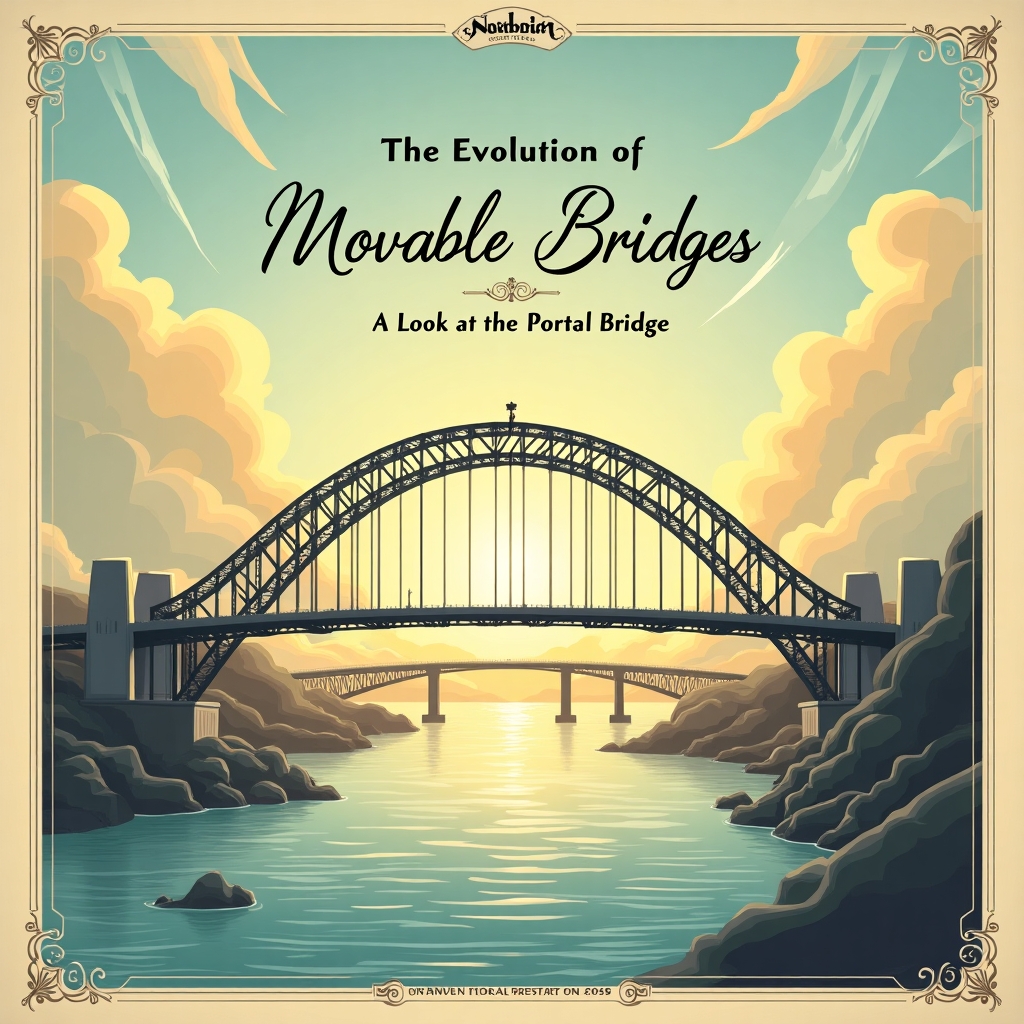So as to allow for the effective functioning of both land and marine traffic, movable bridge have been a vital part of infrastructures. Over time, these bridges—which are constructed for opening and closing to let ships and boats pass—have seen significant modifications. The Portal Bridge, an essential rail bridge that has supported the Northeastern Railroad for over a century, is one of the most renowned movable bridge in the United States. But given the operating problems and delays caused by its aged building, a modern replacement is now needed.
A Historic Landmark in American Rail Transport
In a bid to increase connection between New York City and New Jersey, the Pennsylvania Railway Company built the Portal Bridge in 1910. Railroad and New Jersey Transportation trains use the bridge, that crosses the Hackensack River, as a vital connection between Boston and Washington, D.C. Its swing-style building, that was crucial when the vessel initially went up, enables it to turn open for ocean traffic.
Yet as rail traffic expanded over the course of time, delays in service resulted from the bridge’s getting worse mechanisms and frequent openings. Significant delays occurred due to trains needing to slow down considerably while crossing with the bridge often failing to lock in position after opening. These challenges have demonstrated how quickly a Portal Bridge rebuild must happen for an effortless efficient rail operations.
The Need for a Modernized Portal Bridge
Each day, around 450 trains cross the Portal Bridge, so any disruption could have an impact on the Northeast Corridor in general. Despite its significance in history, the present structure is unable to satisfy the demands today’s train transportation. As a consequence, a replacement project has been created that gives priority to:
- Increased Capacity: More trains will be able to move over the new bridge without causing delays.
- Improved Reliability: Through doing away with openings, a fixed-span design can reduce lower on delays.
- Stronger Infrastructure: Long-term durability will be assured through the utilization of modern building supplies and techniques.
- Improved Safety: The new bridge will feature stronger structural support to endure extreme conditions and high congestion.
Sustainable Design and Environmental Considerations
For the Portal Bridge repair project, sustainability is just as important as efficiency. To reduce the impact on the environment, engineers are including eco-friendly materials, enhanced drainage systems, and noise-canceling features. In order to guarantee that the structure is resilient for many years to come, the updated layout additionally adjusts for changes in the climate and increasing sea levels.
Economic and Transportation Benefits
Sustainability is just as essential to the Portal Bridge rehabilitation project as efficiency. Engineers are integrating noise-cancelling features, better drainage systems, and environmentally conscious elements to reduce the impact on the environment. The updated design additionally takes climate change and increasing sea levels into account in order to make sure the structure is robust for many decades to come.
Looking Ahead: The Future of PortalBridge
More than mere infrastructural advancement, replacing the Gate Bridge is a prerequisite to increased connectivity and economic growth. Businesses, freight transportation, and everyday commuters would all benefit through a more secure and smooth rail system. The project has the potential to benefit local economies through generating thousands of jobs.
For more information on the latest updates regarding the PortalBridge project, stay tuned as we continue to track its development.





























